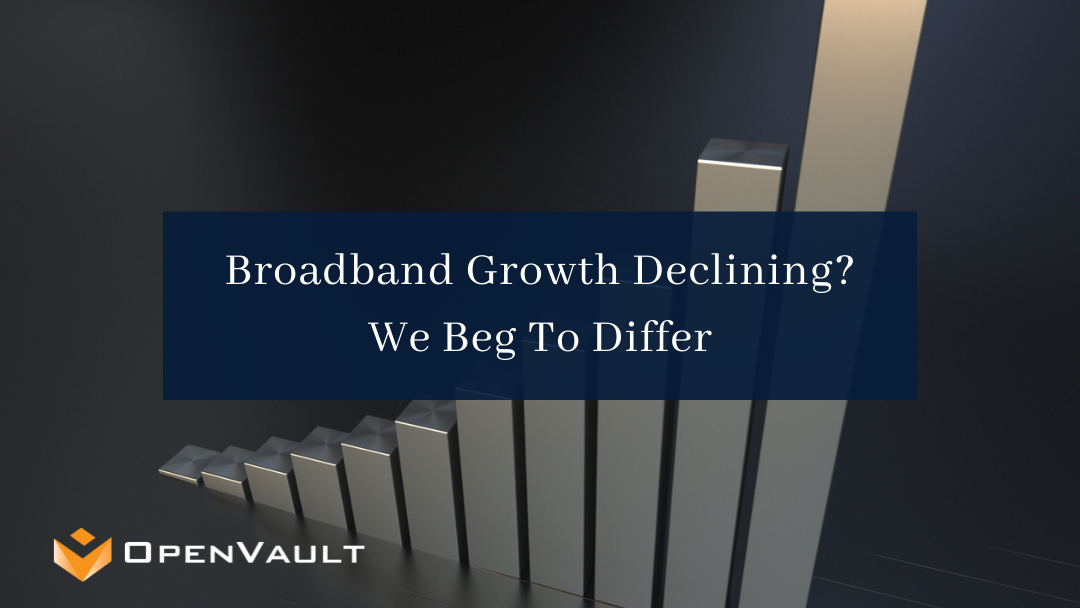Like Mark Twain’s death, reports of a significant decline in broadband growth in the coming years are greatly exaggerated.
We at OpenVault have had a bird’s-eye view of the broadband landscape for more than a decade now, and among our observations has been the persistent entry of new or newly-invigorated applications that have kept consumer demand at high levels for bigger pipes and faster speeds.
A recent report suggested that fixed broadband traffic growth is slowing down and reminded that nothing grows forever. While we agree with that reasoning, we do think it’s early to be dimming the lights on the broadband party.
From where we sit, the broadband landscape is long on potential and short on predictability. Not a day goes by, it seems, without the emergence of new connected devices that fuel the need for more capacity and more speed. Our just-published 1Q21 OpenVault Broadband Insights (OVBI) report shows that the number of subscribers provisioned for Gigabit service has jumped 75% over the last two quarters. And last year alone, total broadband traffic increased by more than 51%.
Our two cents is that neither the population of high bandwidth devices nor the array of high bandwidth services has reached saturation, nor are they anywhere close. Consider:
- Streaming needs are increasing – Netflix recommends 5 Mbps for a single stream of HD video and a 25 Mbps for a single 4K Ultra HD stream, while Apple recommends a minimum of 25 Mbps for a single Apple TV+ 4K HDR stream. Note that streaming services utilize adaptive bit rate encoding to optimize the viewing experience based on available bandwidth.
- Nielsen’s Law and beyond – While Nielsen’s Law of Internet Bandwidth predicts that peak downstream speed packages offered by operators grow at a ~50% compound annual growth rate, the reality is that the actual peak service tiers offered by operators have been closer to a 60% compound annual growth rate. It’s been our experience that faster speeds lead to more growth, and there’s lots of speed that has yet to be harnessed.
- The background factors – Although streaming video is the dominant factor in broadband consumption, more subtle applications and devices are quietly gobbling bandwidth as well. For example, the Apple TV aerial screensavers can consume up to 4GB monthly and Apple TV system updates can be as large as 1 GB. Mobile offload, in which mobile subscribers connect to WiFi to access data services, is commonplace. In an instant-gratification world, subscribers are opting for more speed so they can get better access to these services.
Nor can we discount the lasting impact of world events on the market. The surges in streaming and video conferencing during the COVID pandemic created shock waves that still are being felt across the broadband landscape. Even as they return to office, school and in-person environments, we expect subscribers to increase consumption above 2020’s record levels. Our prediction is that average monthly usage in 2021 will be between 600-650 GB per household.
We agree that a slowdown in growth is in broadband’s future but believe strongly that the pipelines of innovation and consumer demand will keep that event well over the horizon. While Mark Twain inevitably has met his Maker, broadband growth remains very much alive.

